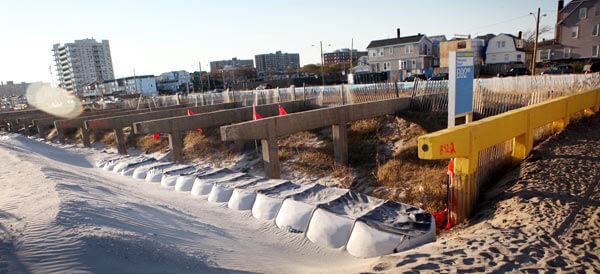By Phil Corso
Hurricane Sandy left a scar on Queens — and the rest of New York City — unlike any other storm in recent history, but Mother Nature might be an even greater threat looking forward.
The city has been taking several cautious steps in the year since the storm hit, costing $18 billion in damages, to combat the greater threat of climate change with hopes of minimizing the potential of another horrific hurricane.
City Councilman James Gennaro (D-Fresh Meadows) has been chairman of the Council’s Environmental Protection Committee and said the city has passed several pieces of key legislation to combat the changing climate. He said two bills passed last month made great strides in helping the city reduce stormwater runoff in severe weather and protecting infrastructure.
“In the wake of Superstorm Sandy, we already know the danger that severe flooding poses to property, critical infrastructure and, most importantly, lives,” Gennaro said. “With climate change making the threat of storms like Sandy even more likely, exploring permeable surfaces for thousands of miles of city streets and sidewalks to absorb stormwater and reduce runoff has never been more important.”
Gennaro has also proposed measures in the Council to increase the use of clean-burning biodiesel fuel, revisions to the city’s air code and to further reduce greenhouse gas emissions beyond the 30 percent reduction already mandated by law in the Council.
Mayor Michael Bloomberg and his administration outlined last week just how prepared the city has become in the year since Sandy and spoke with great optimism.
“We are prepared. In fact, we are better prepared than we were for Sandy,” said Cas Holloway, deputy mayor of operations.
Holloway joined with other top city officials, including Linda Gibbs, deputy mayor for health and human services, to outline the city’s preparedness and recovery projects in the year since the storm. Some of the city’s biggest moves, officials said, came in the forms of remapped evacuation zones that better reflect new flood risks and infrastructure upgrades.
The measures were mapped out to combat a greater threat outlined in another Bloomberg report put out in June, which predicted a rise in rainfall and temperature over the next several years.
Bloomberg said it should be a top priority to widen and improve sand dunes along some of the city’s most vulnerable beaches and shore fronts, including Jamaica Bay and Breezy Point, which were some of Sandy’s most vulnerable victims. The mayor said Jamaica Bay was scheduled to receive storm surge barriers to protect residents from massive flooding and Breezy Point would also soon be getting a new double-dune system.
The city also spent more than $270 million over the past year restoring the beaches and shore fronts crippled by the storm, including Rockaway Beach, which is slated to get part of a new $200 million, 4.7-mile boardwalk planned for the shoreline, according to the mayor.
On the state level, Gov. Andrew Cuomo rolled out a string of new laws to help New York recover from Sandy’s effects with the environment in mind. One of the laws, specifically, was geared toward preserving and rebuilding the most at-risk shorelines. Cuomo signed the legislation into law last week, establishing a community preservation fund to protect the state’s areas of natural beauty from excessive development and expand the criteria for space that can be protected by these funds to include shoreline at risk of coastal flooding due to projected sea level rise and storms.
The governor also advocated for more funding to benefit the state’s Hazard Mitigation Grant Program to help municipal governments and nonprofits rebuild after devastating storms. Cuomo said more than $500 million was expected to be made available for the program with the state’s help.
“Severe weather events are no longer once every hundred years, so our communities must be ready to handle more frequent and intense storms,” Cuomo said. “These funds will provide financial assistance to communities statewide to rebuild and improve our resiliency, as part of the state’s ongoing work to ensure that we are better prepared to protect New Yorkers, strengthen facilities and infrastructure and maintain critical services.”
Reach reporter Phil Corso by e-mail at pcorso@cnglocal.com or by phone at 718-260-4573.





































